Every so often, I receive a phone call inquiring where to find the requirements for smoke alarms for single-family dwellings in the National Electric Code. Electrical installers and inspectors rely on the NEC for guidance toward proper installations and are often shocked that smoke alarms are not in the Code. This article discusses where to find the requirements for installing smoke alarms.
Out of Tragedy Comes Safety Requirements
As with many things in the construction industry, tragedy tends to motivate change to alleviate or prevent future occurrences. News reports often show a serious injury or death due to fire. Sometimes a functioning smoke alarm saved the life of a family; other times, deaths occurred because of their absence.
Often these deaths could have been avoided with proper foresight and maintenance of this equipment. Many fire departments advertise the need to replace batteries in smoke alarms on a yearly basis. In most cases, failure to do so results in a “chirping sound” alerting the occupants of a problem. Many smoke alarms emit this “chirping” sound when the battery is low and in need of replacement. I understand that this noise is especially annoying when it happens at 3:00 a.m. in the morning!
Most people replace batteries on a yearly basis. Unbelievably, others decide to unhook this equipment to stop the “chirping” sound. Disconnecting the alarm is unsafe and places the occupants in danger in the event of a fire within the structure.
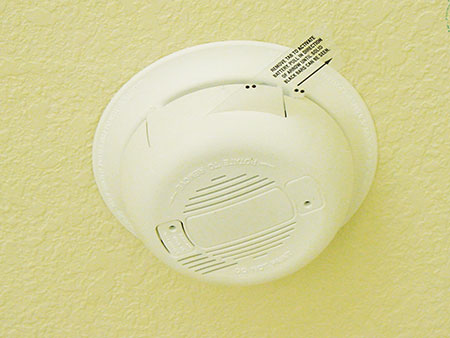
Photo 1. Smoke alarm installed on ceiling. Remember to remove the plastic tab to activate battery source.
Terminology Concerns
Often within the construction trades, you hear the term smoke detector used in place of smoke alarm. Are these terms interchangeable? No! Let us look in the 2012 International Residential Code (IRC) for the definition of a smoke alarm.
Single Station Smoke Alarm. An assembly incorporating the detector, control equipment and alarm sounding device in one unit that is operated from a power supply, either in the unit or obtained at the point of installation. (Chapter 2 Definitions, 2012 IRC)
The 2013 UL White book includes a category listing for smoke alarms on page 393 and is entitled “Single- and Multiple-station Smoke Alarms.” The category code (UTGT) indicates that these are for indoor locations. It also states that these alarms have been performance tested to a minimum 10-year extended battery life under normal ambient conditions. These alarms are intended for flush-mount applications only and are not intended for use on surface-mounted boxes.
All smoke alarms shall be listed and labeled in accordance with UL 217, Single and Multiple Station Smoke Alarms, per requirements of Section R314 of the 2012 IRC. Listed is defined in the Building and Fire codes as: “Equipment, materials, products or services included in a list published by an organization acceptable to the building official and concerned with evaluation of products or services that maintains periodic inspection of production of listed equipment or materials or periodic evaluation of services and whose listing states either that the equipment, material, product or service meets identified standards or has been tested and found suitable for a specific purpose.” There is also a requirement that the smoke alarms be installed in accordance with NFPA 72, National Fire Alarm and Signaling Code. This provision deals with household fire warning equipment and its installation, which will be discussed in detail later in the article.
This definition informs the reader that the smoke alarm is an assembly. It also tells us that the power source is at the individual unit either in the form of a battery, the premise wiring system or both. The smoke alarm has the necessary components to detect and alarm, thus notifying the occupants of the presence of fire.
The IRC specifies smoke alarms for locations within dwelling units. References to these locations, as well as other important information, can be found in the 2012 IRC under Section R314 entitled “Smoke Alarms.” Additionally, requirements for carbon monoxide alarms can be found at Section R315. Both are similar pieces of equipment and have installation requirements that installers and inspectors must be aware of in order to produce a compliant installation.
The definition of smoke detector as found in the 2012 edition of the International Building and Fire Codes is: “A listed device that senses visible or invisible particles of combustion.” A smoke detector is strictly a component in the detection system that relies on other separate equipment used in conjunction to accomplish the task of alerting occupants of a fire.
Likewise, the 2013 UL White Book includes a category listing for automatic fire detectors on page 390, which is entitled “Detectors, Automatic Fire.” The category code (UPLV) describes these as either individual devices or prescribed combinations of devices designed to detect flame, heat, smoke or combustion gases resulting from a fire and to automatically operate electrical signaling contacts. These signaling contacts may be internal to the individual device or may be part of a separate device and connected as an extended component. The signaling contacts are intended to be connected to the circuit conductors of a fire protective signaling system recognized by NFPA standards. This connection will allow the fire alarm signal that has been initiated by the detector to be indicated by the system.
Other information can be found by reviewing these and other smoke alarm and fire or smoke detection categories found within the UL White Book. If you have questions or concerns about any of the information found within this document, contact UL’s Regulatory Services Department at 1-800-595-9844 or via email at ulregulatoryservices@ul.com or visit their website at www.ul.com/codeauthorities
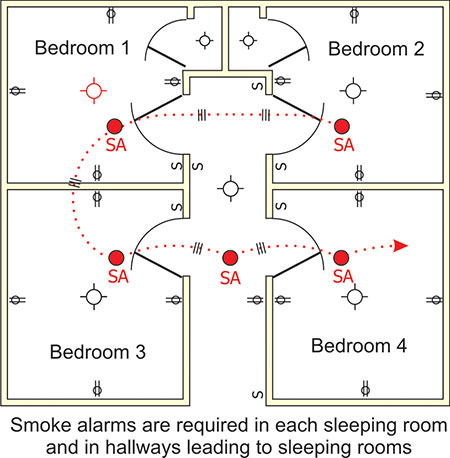
Photo 2
The Building Codes
One must rely on recognized building codes to provide information towards code-compliance; for example, smoke alarm requirements are governed by state and locally adopted building codes. If you are unfamiliar with these requirements, make sure you contact the building department in your area for clarification prior to beginning your project. All the nationally recognized building codes contain requirements for smoke alarms. For the purpose of this article, the requirements of the 2012 International Residential Code (IRC) published by the International Code Council (ICC) will be referenced.
For the most part, smoke alarms are required to warn occupants of the presence of smoke in the sleeping quarters and the hallways or corridors in the immediate vicinity of these locations. They are also required on each level of the dwelling unit, excluding crawl spaces and attics. An example would be a hallway that serves three sleeping quarters within a single-family home. A smoke alarm would be required in each of the three bedrooms. One smoke alarm would also be required in the hallway or corridor serving these bedrooms. Be aware of additional requirements governing additional smoke alarm installation when a hallway or corridor enters another room. An example could be a den or living room where there is a change in ceiling elevation from that of the hallway or corridor. In this case, IRC R313.3 states that the area outside the hallway in the living room could require an additional smoke alarm.
When remodels or alterations are made to an existing building, smoke alarm placement is a requirement. This placement typically applies only to interior modifications and does not concern new roofs, decks, windows or doorways. If a remodel results in additional sleeping rooms, provisions must be made for the installation of smoke alarms as required for new dwelling units.
Check the installation instructions regarding each type of smoke alarm you encounter. The instructions will dictate whether the smoke alarm can be installed on the wall or ceiling. There is also information that instructs the installer as to the distance the alarms are to be installed from the ceiling. Some instructions also reference how close they can be installed to return air vents or other air distribution vents. Again, please visit with your building department to verify that these are the requirements being enforced in your area.
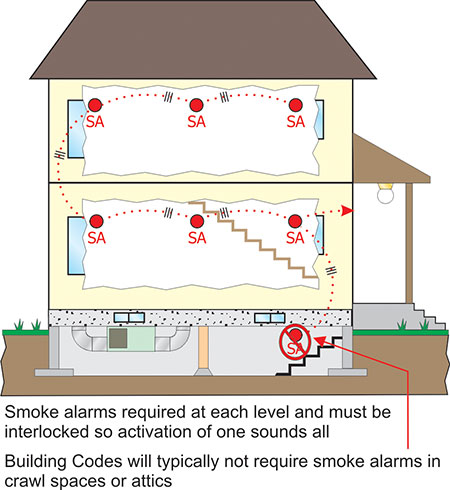
Photo 3.
Interconnection
Smoke alarms are required to be interconnected; so if one is actuated, they all are actuated. The requirement for interconnection alerts the occupants who are asleep in other areas of the structure. This alert allows everyone time to exit the structure; hopefully, prior to the fire causing too much smoke and structural damage.
Smoke alarms in new construction applications are required to be connected to the premise wiring system of the building as their primary power source. A battery is required as a backup source, in the event that primary power to the unit is interrupted. A couple of exceptions exists to this main rule. One allows for battery-operated smoke alarms in the event the building does not have electricity. The second exception recognizes existing areas where alterations and repairs are made that do not result in removal of interior wall or ceiling finishes. A hardship might be encountered in these circumstances, and a battery-powered smoke alarm would be permitted. This permission is only allowable where there is no attic, crawl space, or basement for access to that part of the project without the need for removal of interior finishes.
Interconnection of this equipment has been inconvenient in some situations. Some jurisdictions require smoke alarms to be installed when an older structure being renovated lacks this protection. As we discussed earlier, this can be as stringent as requiring interconnected smoke alarms per the requirements of the building code, or maybe battery-operated units in various locations of the structure. The IRC gives direction to these installation requirements. Again, please visit your local building department for a list of their requirements concerning your project.
Household Fire Alarm Systems
Some homes might not have smoke alarms installed as this article is addressing. Provisions in Section R314.2 of the IRC addresses smoke detection systems. This type of system is installed and governed by NFPA 72. It is typically a permanent fixture of the occupancy and is owned by the homeowner. The system is monitored by an approved supervising station in the event of a fire so that the proper authorities are alerted.
This system shall provide the same level of protections afforded by smoke alarms. An exception to this type of system exists smoke alarms installed meeting the requirements concerning power provided by a premise wiring system with battery backup and other requirements found at R314.4.
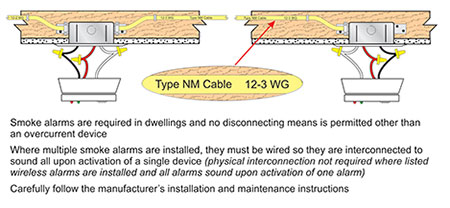
Photo 4.
To AFCI-Protect or Not to AFCI-Protect
As previously stated, the primary power source for smoke alarms comes from the premise wiring system. These devices are typically connected to a 120-volt, single-phase, 15- and 20-ampere branch circuit and include battery backup within the smoke alarm. These devices are not required to be on a separate or dedicated branch circuit. To comply with the “interconnected” provision that we discussed earlier, the vast majority of installers will install all the smoke alarms on one branch circuit using a third wire such as the red wire from a 14/3 Type NM cable to “interconnect” these smoke alarms. Please check with your enforcement jurisdiction because some jurisdictions require these devices to be connected to a dedicated branch circuit. Because these smoke alarms are “outlets” being supplied by a branch circuit described at 210.12 of the NEC, they are also required to be AFCI-protected.
210.12 Arc-Fault Circuit-Interrupter Protection. Arc-fault circuit-interrupter protection shall be provided as required in 210.12(A) (B), and (C). The arc-fault circuit interrupter shall be installed in a readily accessible location.
(A) Dwelling Units. All 120-volt, single-phase, 15- and 20-ampere branch circuits supplying outlets or devices installed in dwelling unit kitchens, family rooms, dining rooms, living rooms, parlors, libraries, dens, bedrooms, sunrooms, recreation rooms, closets, hallways, laundry areas, or similar rooms or areas shall be protected by any of the means described in 210.12(A)(1) through (6):
(see the remainder of the text in 2014 NEC)
The code language specifically mentions bedrooms and hallways as requiring AFCI protection. Furthermore, if we look further, the language specifies this protection for all 120-volt, single-phase, 15- and 20-ampere branch circuits supplying outlets and devices in these locations. Below are definitions for an outlet and a device.
Outlet. A point on the wiring system at which current is taken to supply utilization equipment.
(2014 NEC)
Device. A unit of an electrical system, other than a conductor, that carries or controls electric energy as its principal function.
(2014 NEC)
From reviewing the language found in the NEC, it can plainly be seen that AFCI protection is required for smoke alarms (outlets) in these locations. Briefly, single-station, 120-volt, smoke alarms require arc-fault circuit-interrupter (AFCI) protection due to being defined as an outlet residing in locations within a dwelling requiring this type of protection. Fire alarm systems being installed within the provisions of NEC Article 760 are prohibited from being connected to arc-fault circuit-interrupter (AFCI) or ground-fault circuit-interrupter (GFCI) protections techniques.
Now, with that being said, there are other alarm systems not requiring AFCI protection. These are low-voltage fire alarm systems with the master control typically located in master bedroom closets. These are considered non-power-limited fire alarm circuits or power-limited fire alarm circuits that are specifically addressed by Article 760 of the NEC.
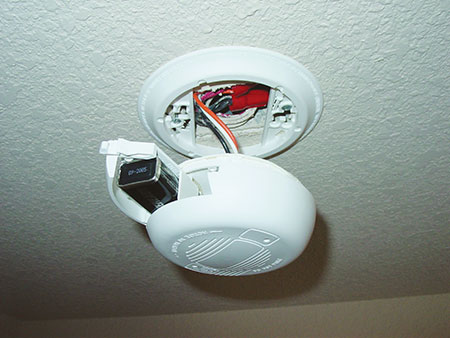
Photo 5. A smoke alarm showing both a premises power source and a battery power source. The red conductor is typically the interconnection between various smoke alarms.
The language in Article 760 has been misapplied, perhaps, and has resulted in some confusion as it pertains to smoke alarms. This confusion has prompted some enforcement jurisdictions to prohibit AFCI protection for smoke alarms. Hopefully, reviewing this language for these different pieces of equipment has provided important guidance for anyone enforcing these code requirements.

Photo 6.
The scope at 760.1 states Article 760 covers the installation of wiring and equipment of fire alarm systems, including all circuits controlled and powered by the fire alarm system. The informational note contains additional details regarding these fire alarm systems.
760.1 Scope
Informational Note No. 1: Fire alarm systems include fire detection and alarm notification, guard’s tour, sprinkler waterflow, and sprinkler supervisory systems. Circuits controlled and powered by the fire alarm system include circuits for the control of building systems safety functions, elevator capture, elevator shutdown, door release, smoke doors and damper control, fire doors and damper control and fan shutdown, but only where these circuits are powered by and controlled by the fire alarm system. For further information on the installation and monitoring for integrity requirements for fire alarm systems, refer to the NFPA 72- 2013, National Fire Alarm and Signaling Code.
An additional Informational Note No. 2 located at 760.1 informs us that Class 1, 2, and 3 circuits are defined in Article 725. Remember, single-station 120-volt smoke alarms are covered by NEC Article 210. These smoke alarms are subject to the requirements for AFCI protection, whereas the low-voltage fire alarms covered by NEC Article 760 are not.
The following definitions are provided to help you understand the requirements for the equipment found in Article 760.
760.41 NPLFA Circuit Power Source
Requirements.
(B) Branch Circuit. The branch circuit supplying the fire alarm equipment(s) shall supply no other loads. The location of the branch-circuit overcurrent protective device shall be permanently identified at the fire alarm control unit. The circuit disconnecting means shall have red identification, shall be accessible only to qualified personnel, and shall be identified as “FIRE ALARM CIRCUIT.” The red identification shall not damage the overcurrent protective devices or obscure the manufacturer’s markings. This branch circuit shall not be supplied through ground-fault circuit interrupters or arc-fault circuit-interrupters.
Informational Note: See 210.8(A)(5), Exception, for receptacles in dwelling-unit unfinished basements that supply power for fire alarm systems.
(2014 NEC)
760.121 Power Sources for PLFA Circuits.
(B) Branch Circuit. The branch circuit supplying the fire alarm equipment(s) shall supply no other loads. The location of the branch-circuit overcurrent protective device shall be permanently identified at the fire alarm control unit. The circuit disconnecting means shall have red identification, shall be accessible only to qualified personnel, and shall be identified as “FIRE ALARM CIRCUIT.” The red identification shall not damage the overcurrent protective devices or obscure the manufacturer’s markings. This branch circuit shall not be supplied through ground-fault circuit interrupters or arc-fault circuit interrupters.
(2014 NEC)
210.8(A)(5)
Exception: Where an individual branch circuit to a fire alarm system installed in accordance with 760.41(B) or 760.121(B) is installed in RMC, IMC, EMT, or steel sheathed cable, Type AC or Type MC, meeting the requirements of 250.118, with metal outlet and junction boxes, AFCI protection shall be permitted to be omitted.
(2014 NEC)
Conclusion
Hindsight is 20/20. No one misses the presence of a smoke alarm until it is too late. The same can also be said of fire extinguishers. When one encounters a fire in one’s home, he would give anything if he had bought a fire extinguisher so he could attempt to put out the fire. The same can be said of the presence of properly operating smoke alarms. This equipment serves an important role in the protection of occupants in dwelling units. We must also understand that a properly installed and maintained smoke alarm will not prevent a fire (unlike AFCI protection for various branch circuits) but the presence of a properly operating smoke alarm can alert occupants to the occurrence of a fire and help save lives.
We spend much time in our homes, a lot of which involves sleep. During that time, small fires can get out of control rather quickly. Properly installed smoke alarms help prevent needless injury and death.
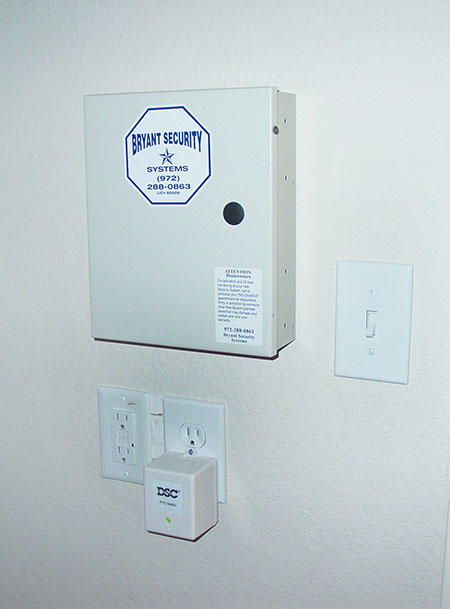
Photo 7. The individual branch circuit for a power source of non-power-limited (NPLFA) and power-limited fire alarm (PLFA) circuits are prohibited from AFCI or GFCI protection.
As the electrical installer or inspector, you are on the front lines as to whether this equipment is installed properly. The building code dictates where this equipment is to be installed. Both, the electrical installer and electrical inspector must make sure it is installed per the requirements of the National Electric Code (wiring methods, etc.) and according to the requirements found within the adopted and enforced building codes. Who knows, someday your life or that of a loved one may depend on it.
Stay safe and always treat this and any other protective device with the utmost respect. That includes changing the batteries on a yearly basis or changing them as recommended by the manufacturer. The International Fire Chiefs Association recommends changing batteries yearly with the Daylight Savings switchover in November. Also, remember to test the devices on a regular basis.
References
One- & Two-Family Residential Dwellings, 8th Edition. Based on NEC-2011. Published by IAEI.








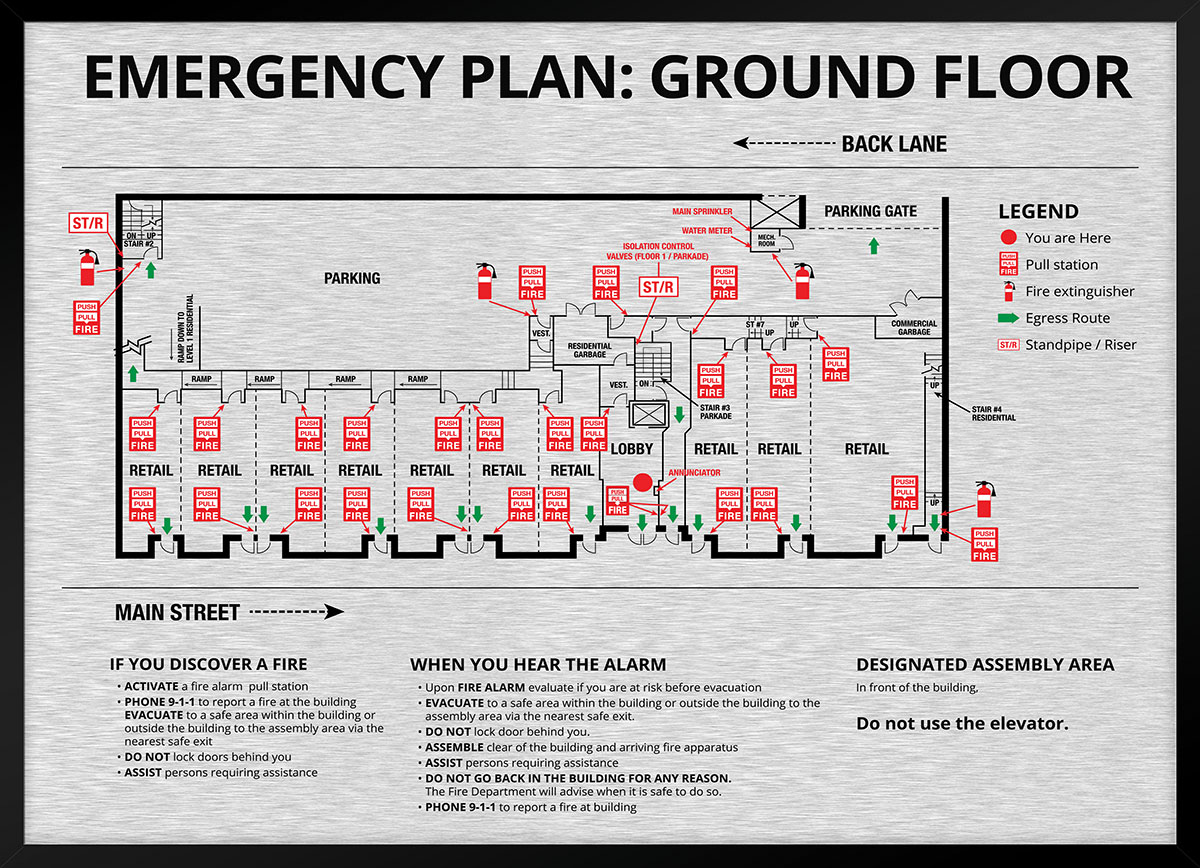
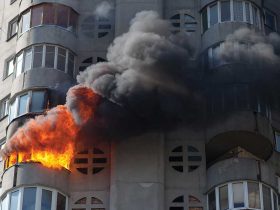

Find Us on Socials